Homemade soap with pure tallow and essential oils to nourish your skin for weeks to come without using any lye solution or waiting for weeks for the soap to cure.
Tallow makes awesome soap with so little work and no complicated cooking process involved.
Gina’s Recipe Rundown:
Texture: Tallow soap has a creamy, smooth, and firm texture. It lathers well, producing a rich, stable foam with small, dense bubbles. When properly cured, it becomes hard and long-lasting, yet still retains a silky feel on the skin.
Benefits: Tallow soap is deeply moisturizing, rich in skin-nourishing vitamins, and provides a long-lasting, creamy lather while being free from harsh chemicals.
Ease to make without lye: Making tallow soap without lye is easy by using a melt-and-pour soap base, allowing you to enjoy its nourishing benefits without handling raw lye.
Why I love it: I love tallow soap for its rich, creamy lather, deep moisturizing properties, and the way it leaves my skin feeling soft, nourished, and naturally healthy.
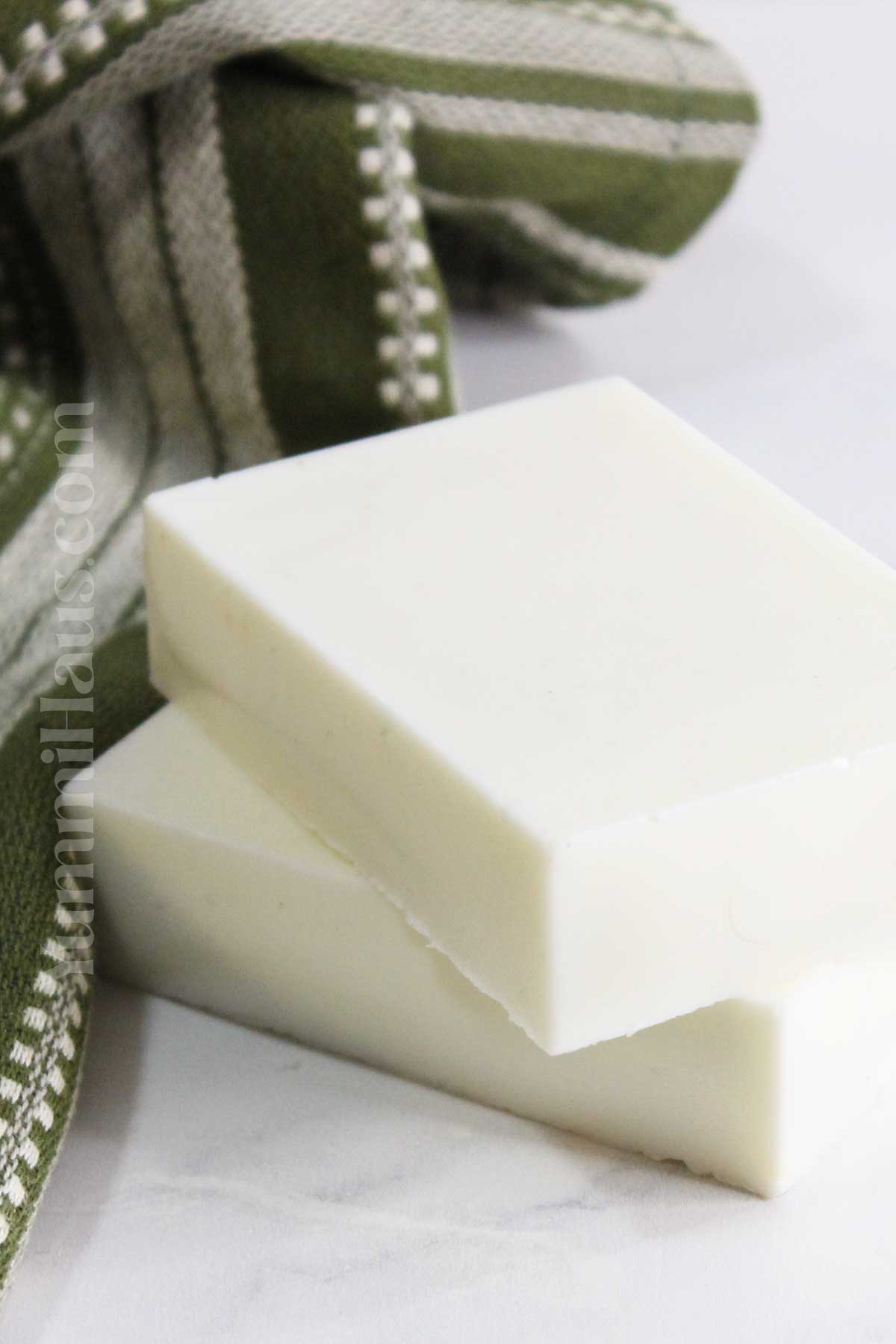
If you’re living in the countryside, a zero-waste lifestyle is something much easier to consider than for those living in the city, and yet, nowadays, we can all buy for cheap rendered fat that “no one” needs and make a few bars of handmade soap for the whole family (and have some spare for gifts).
It is super common today to make your own care products since so many people suffer from allergic reactions to mass-produced creams, soaps, and gels and can’t find the right product for their skin. Why not make one?
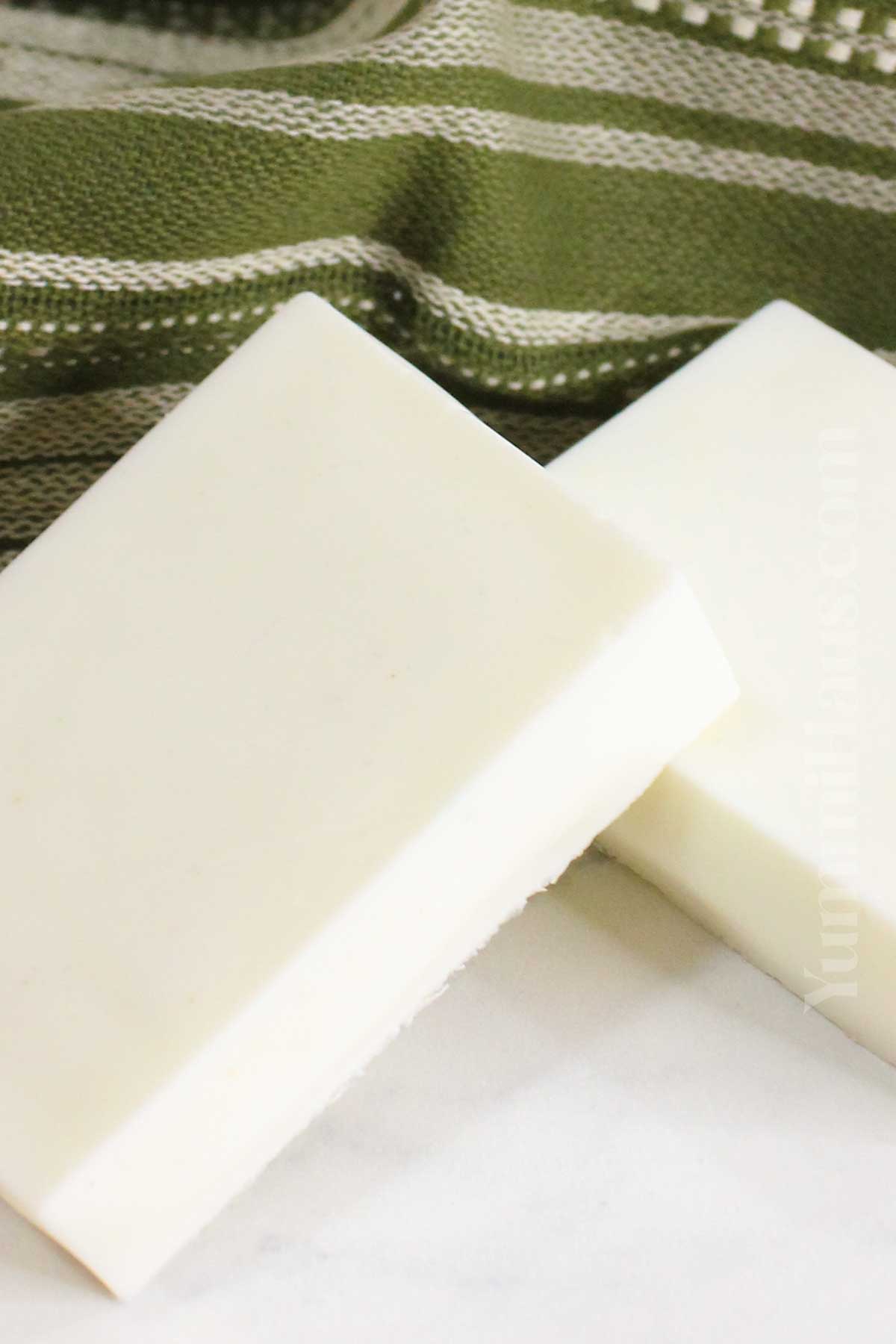
- Gina’s Recipe Rundown:
- Why You’ll Love This Recipe?
- Benefits Of Tallow Soaps
- Ingredients Notes
- Kitchen Equipment
- How To Make Tallow Soap
- Where To Get Tallow For The Soap Making?
- Storage
- Substitutions & Variations
- Expert Tips For Making Soap With Tallow
- Popular Questions
- Cold Process Soap Making Vs Hot Process Method
- What Are The Disadvantages Of Tallow Soap?
- Does Tallow Soap Clog Drains?
- Does Tallow Soap Lather Well?
Why You’ll Love This Recipe?
- This simple tallow soap recipe makes 4 ½ soaps if using the same mold. You can, of course, adjust how many bars the recipe makes by simply cutting larger or smaller pieces.
- No immersion blender, potash (potassium hydroxide), or lye solution is needed which makes the soap-making process much easier and safer.
- This amazing soap helps to make our households a bit more zero-waste and sustainable.
- It looks pretty! White creamy soap bars are perfect for handmade gifts. And no, it doesn’t have any impurities or smell of animals.
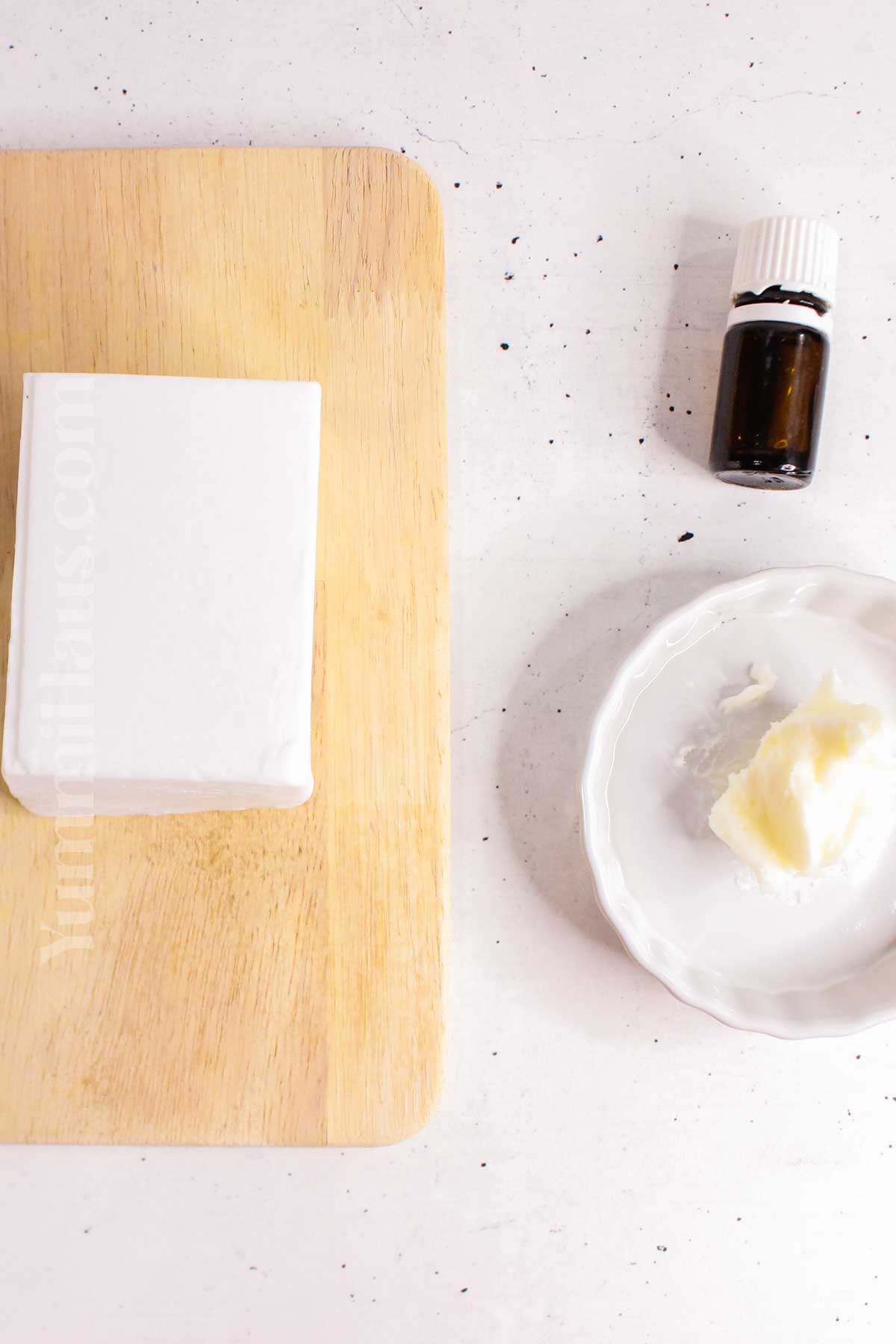
Benefits Of Tallow Soaps
- Great for all skin types. Tallow soap is naturally good for sensitive skin and has good nourishing properties. If you have very sensitive skin, please test on a small area of your skin first.
- Cheap long-lasting bar of a cleansing soap that has a nice creamy lather. Tallow coconut oil soap will also foam really well. Depending on how often you use it for skin care, a tallow bar can last for 3 months or more.
- It is handmade, meaning we will know for a fact we didn’t put any toxic ingredients in it.
- Blended with oils, it is a good moisturizer and has potent nourishing properties which is super important for mature skin to maintain a healthy skin barrier and reduce aging effects.
- Tallow soap doesn’t clog pores. Tallow is animal fat, we also have our own fat the skin produces, so in that sense, tallow is similar to our fat and won’t cause any issues, unless, of course, you have issues with regulating skin sebum secretion.
- Tallow soap bar has antimicrobial properties thanks to palmitic acid and stearic acid that are found in tallow naturally and break down microbes’ cells.
- Tallow products have vitamin E and because of the essential fatty acids that tallow also contains, vitamins get delivered to your body better.
Despite all the good stuff about tallow soap, it is for external use only!
Ingredients Notes
You will only need 3 simple ingredients to make beef tallow soap:
- Melt and pour soap base. Using the soap base is a shortcut to avoid mixing the lye water.
- Beef rendered tallow – the natural ingredient for our soap.
- Essential oils – the fragrance of your choice, you will only 20 drops. If you have sensitive skin, you can skip the oils, they are mostly for aromas, despite their useful properties, the amount and the application (soap form) don’t really allow for them to work. Peppermint, sage, and lavender or essential oil blends are great ideas. Unscented options are perfectly fine too, just skip the oils.
To make your own tallow, you can follow my step-by-step recipe.
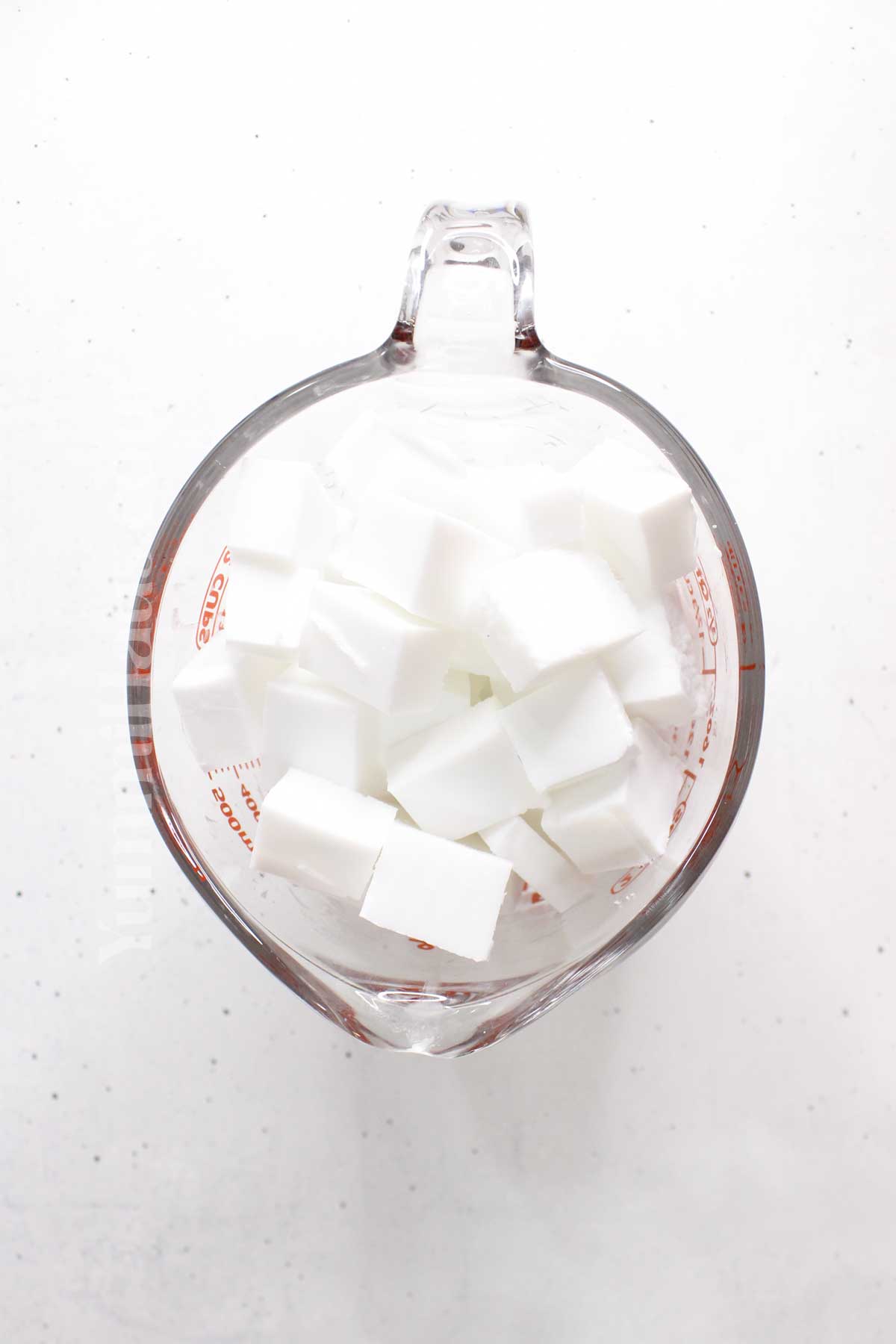
Equipment
- Large glass measuring cup, microwave-safe
- Soap mold
- Sharp knife
- Soap-making Kit – opt
How To Make Tallow Soap
1. Melt The Soap Base
- Cut the soap base into 1” cubes.
- Place the soap base in the large glass measuring cup.
- Microwave in 30-second increments, stirring in between each increment, until the soap base is completely melted. You can also melt it in a saucepan over low heat.
2: Add Tallow & Essential oils
- Slowly stir in the tallow. It will have a consistency similar to a light pudding aka light trace.
- Once the mixture has cooled slightly, add essential oils.
3: Pour Into The Mold
- Pour all the mixed soap ingredients into the soap mold and let sit for a few hours or overnight to set. Make sure to tap the sides to let all the air bubbles pop.
- Unmold and enjoy!
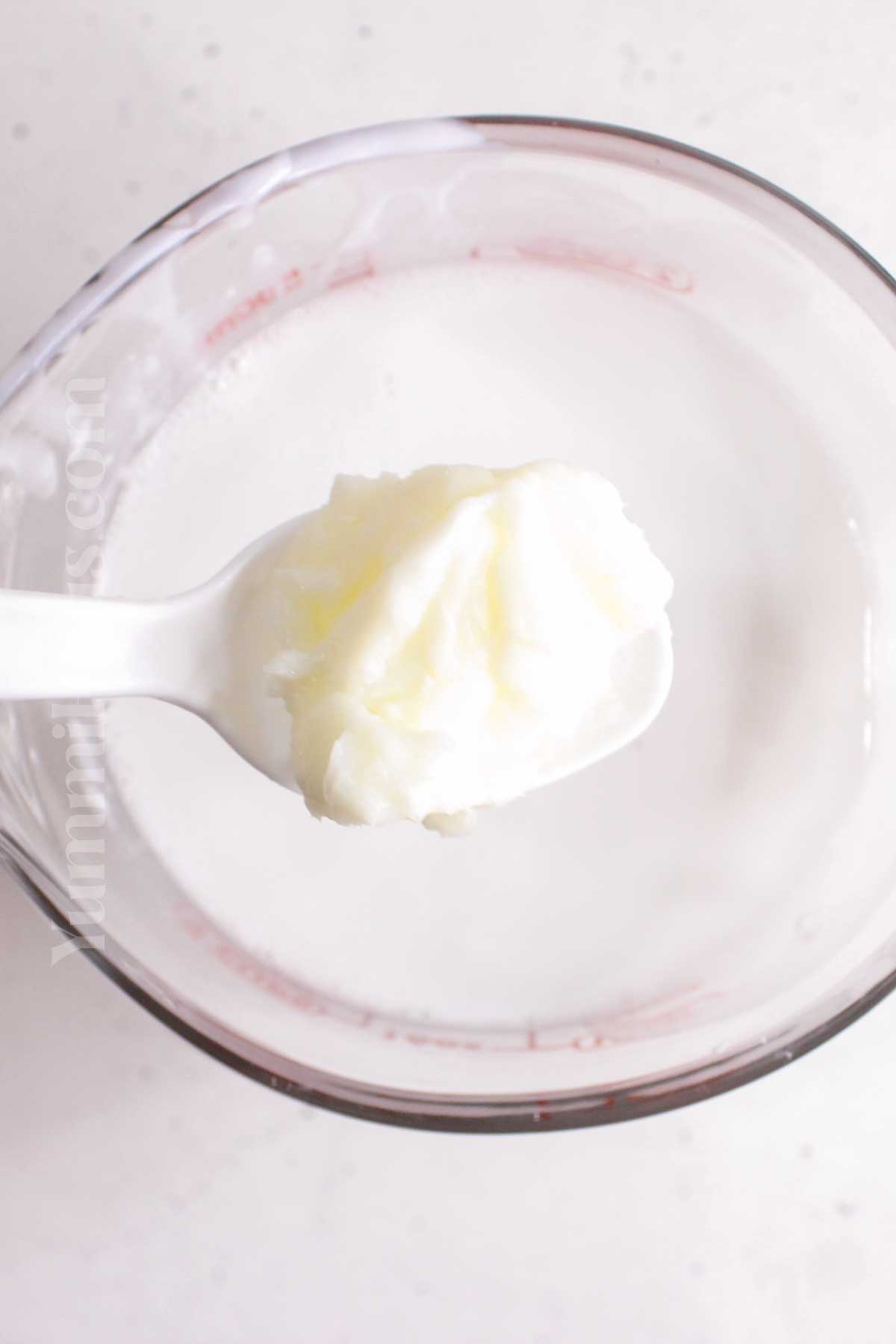
Where To Get Tallow For The Soap Making?
The two easiest ways to get some beef tallow are to either make your own tallow or buy from your local butcher.
However, the quality of the beef fat really matters. You need grass-fed beef tallow for the best results or grass-fed unrendered fat to make your own tallow. Tallow is any rendered animal fat so if you want beef specifically you should double-check.
If making tallow from scratch, it will take quite some time, so plan accordingly.
Storage
Handmade soaps can be softer than store-bought and during hot weather they can soften up.
Tallow soap, properly made and stored in a dry dark place will last for a year. It won’t go bad quickly, but beyond the one-year mark, it can become rancid.
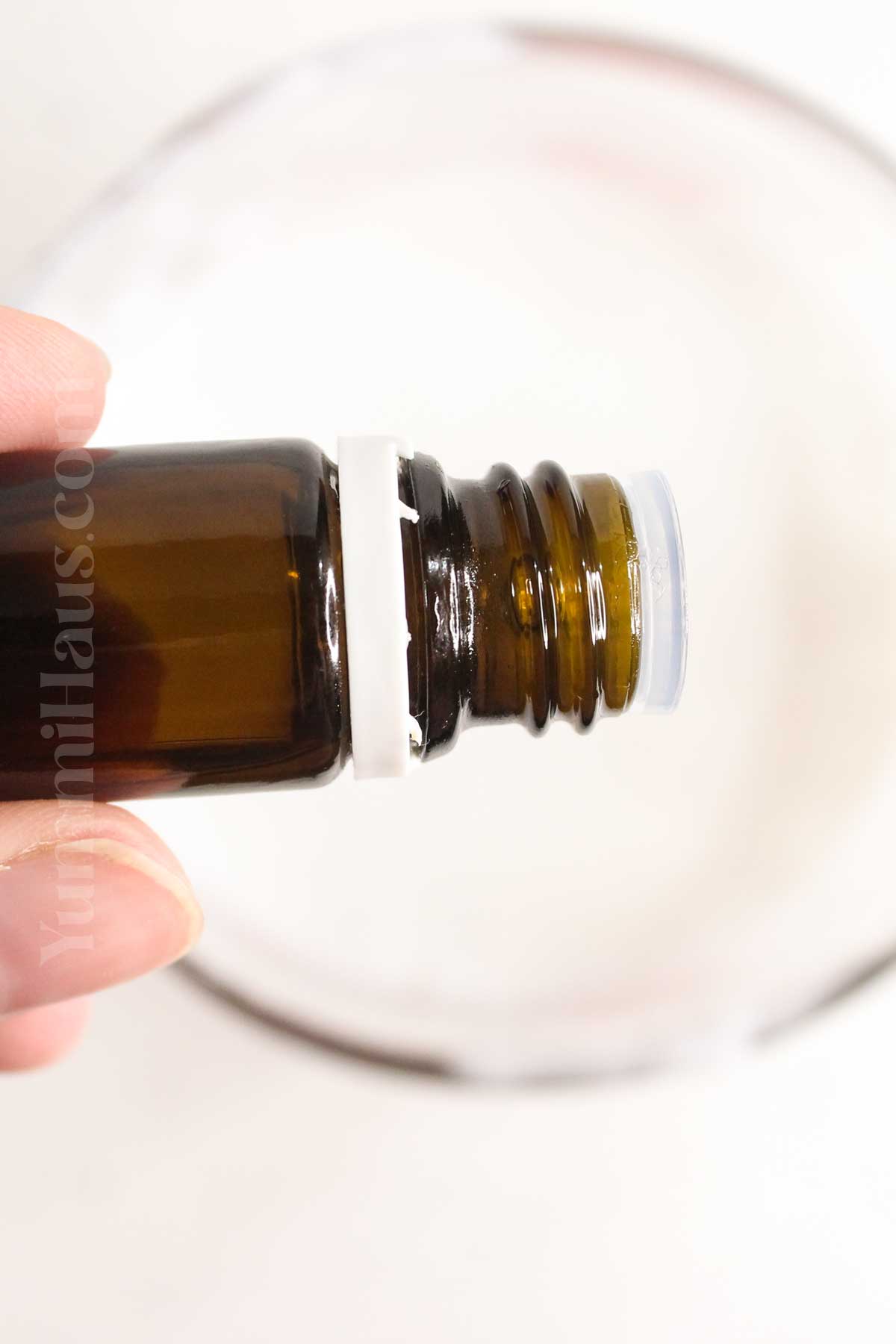
Substitutions & Variations
- Essential oils and synthetic fragrances are optional. Note that fragrance will go away from soap bars eventually.
- You can use mica powder to make your soap different colors. Natural coloring works amazing too but may not produce as bright colors as artificial colors
- Tallow options. The pure tallow soap recipe is the most basic one, but you can also try to make deer tallow soap, sheep tallow soap, and add lard to the mix. If you have access to rarer types of tallow, you may look into bear or goat. The recipe will have to be adjusted slightly.
- There are soap recipes with a lye mixture (sodium hydroxide) and distilled water. Lye is what causes the natural chemical reaction to break down all the fat and help the uniform soap mixture form. The lye soap will need much longer curing.
- You can make more plant-based oils like coconut oil (hard oil, good for foam and cleansing, but doesn’t really add a coconut scent), olive oil, castor oil (soft oils, give less foam and less squick), jojoba oil, macadamia or sweet almond oil, or cocoa or shea butter. All the oils and cosmetic butters work best in different ratios and recipes. Palm oil was often used to make commercial soaps, but small soap makers already rarely use this controversial oil.
Expert Tips For Making Soap With Tallow
- While you can add lard to the tallow soap, do not replace tallow with lard altogether. They are not interchangeable and it will ruin the end result.
- For creamier soap, add milk! Goat milk is a popular choice. You can use both fresh and frozen milk.
- If you will make tallow soap with lye, you must wear protective gear (gloves, covered shoes, mask, and glasses) and keep windows open. All the lye solutions can burn skin, it is pretty nasty.
- If you want to sell soap, you can add swirls, flowers, cosmetic-grade glitter, or decorations too.
- You can use a crock pot to melt tallow and other oils together.
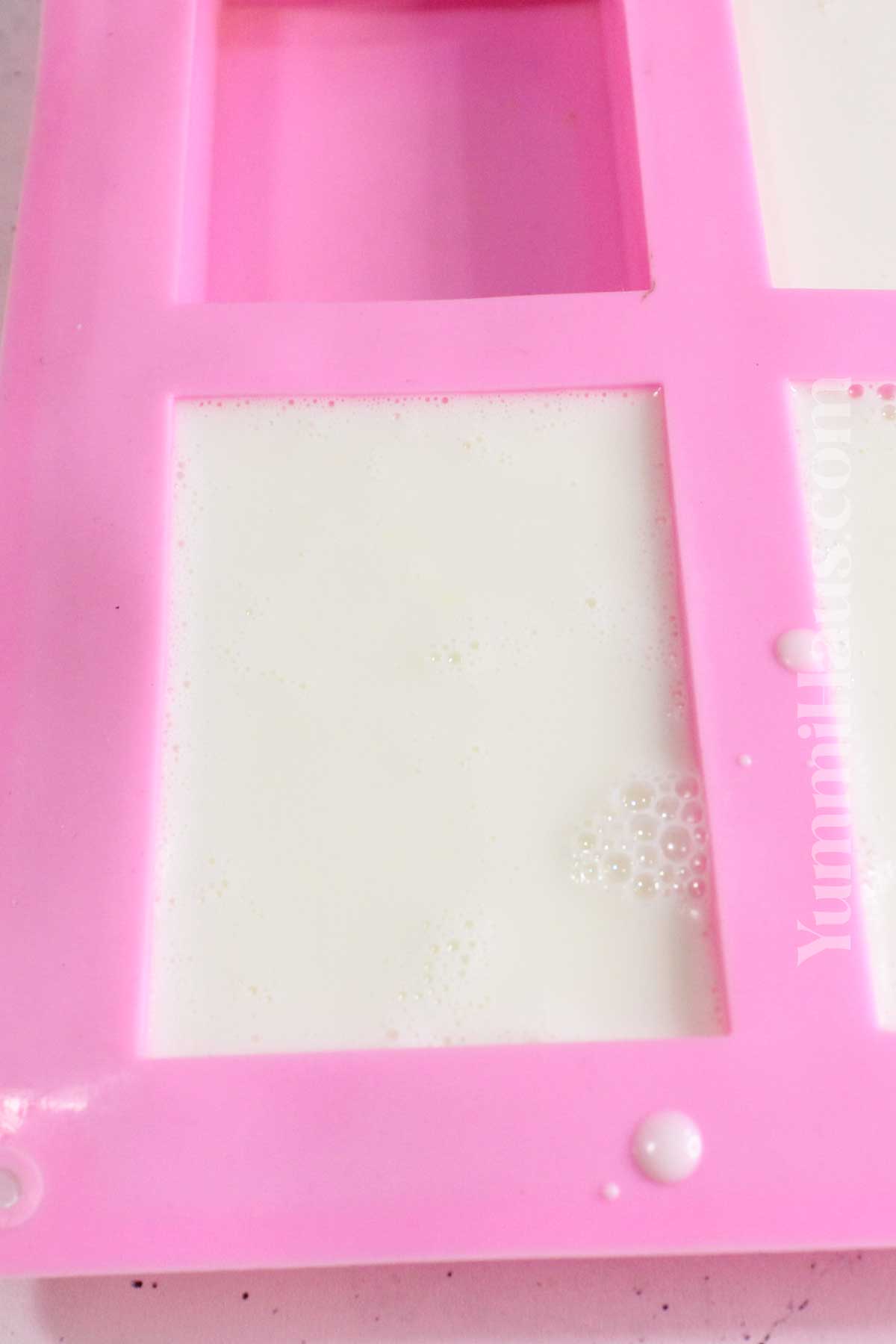
Popular Questions
Cold Process Soap Making Vs Hot Process Method
The hot process is much easier and the saponification process happens when all the ingredients are heated and you can use the soap right after. With the cold process method, you need to cure the soap for 4 weeks.
What Are The Disadvantages Of Tallow Soap?
In rare cases, people can be allergic to tallow soaps, the tallow soap can melt and soften too quickly in hot humid climates, and it also can raise your skin’s natural PH level. It is also not vegan, which concerns a lot of people.
Does Tallow Soap Clog Drains?
Contrary to popular belief, tallow soap doesn’t clog sink drains since the soap-making process breaks down all the fats and liquid oils. “Raw” tallow, on the other hand, like any other animal fat, can clog drains and build up inside the pipes.
Does Tallow Soap Lather Well?
Tallow soap makes a nice fluffy luxurious lather and if you want it to lather better you can add refined coconut oil.
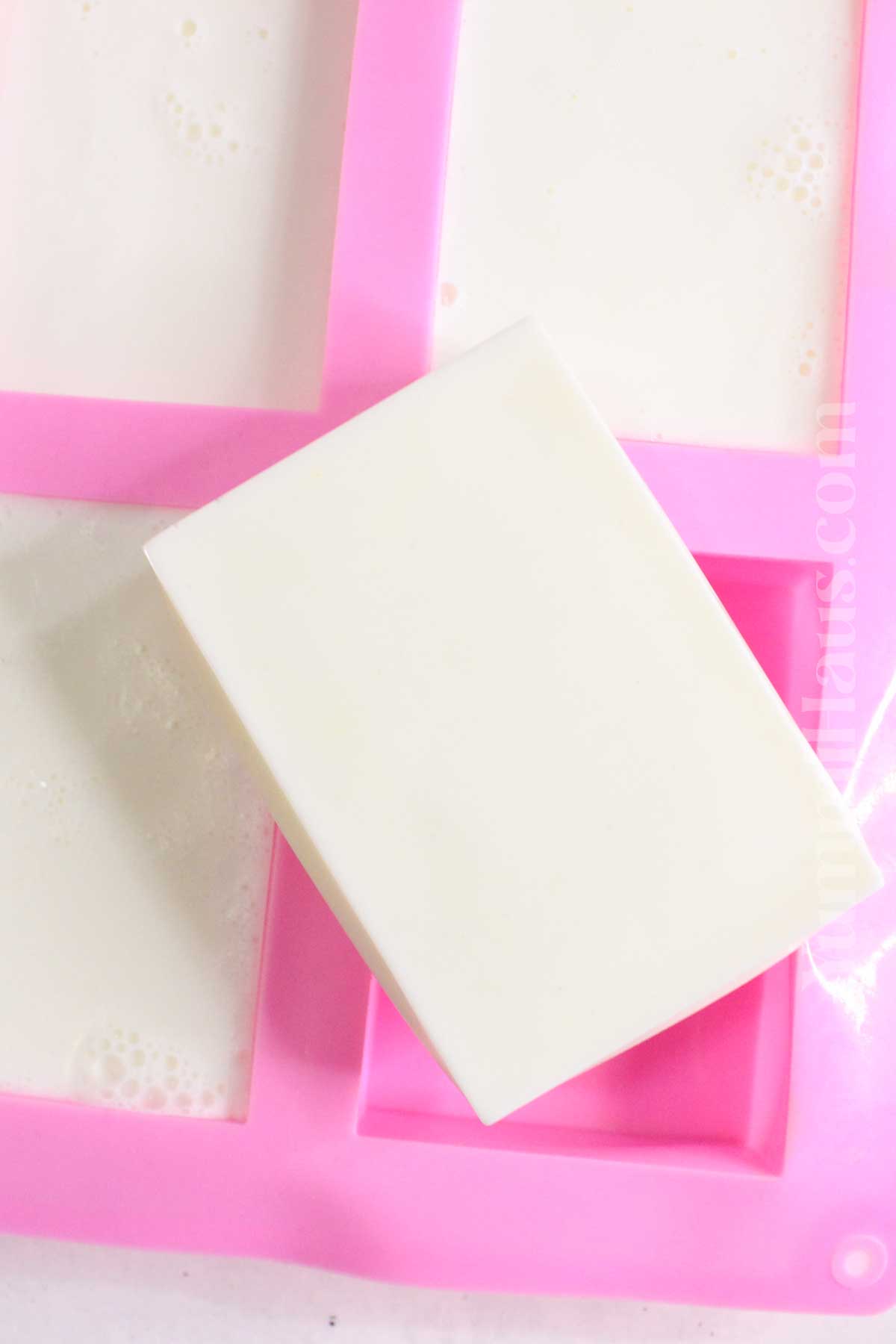
More Great Ideas For The Home
Affordable Housewarming Gift Idea
Don’t forget to check out my post to make your own beef tallow!
CONNECT WITH YUMMI HAUS!
Be sure to follow me on my social media, so you never miss a post!
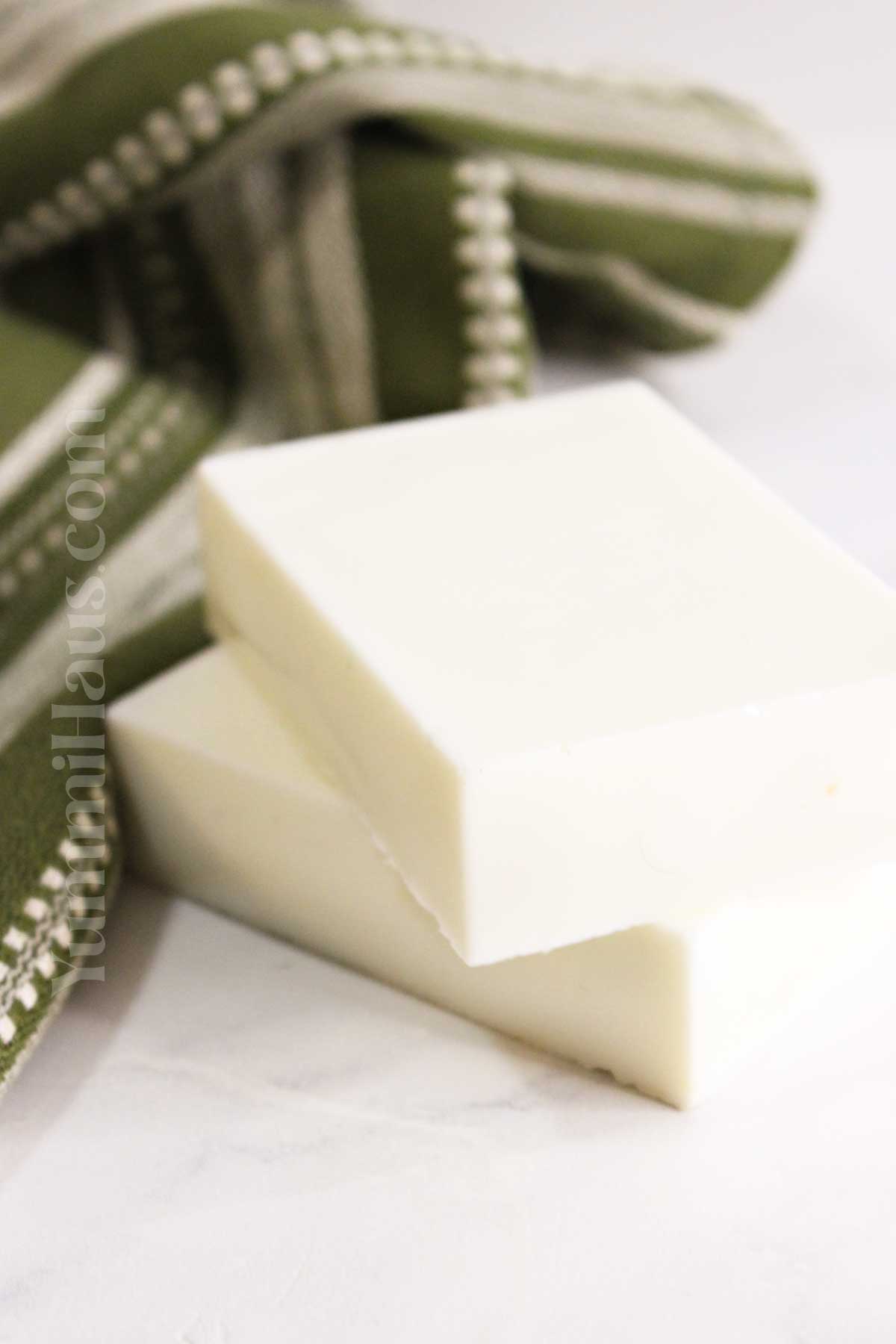
Tallow Soap
Equipment
- Large glass measuring cup
- Soap mold
Ingredients
- ½ lb melt and pour soap base
- 1 tablespoon beef rendered tallow
- 20 drops essential oils – fragrance of your choice
Instructions
- Cut the soap base into 1” cubes.
- Place the soap base in the large glass measuring cup.
- Microwave in 30-second increments, stirring inbetween each increment, until the soap base is completely melted.
- Stir in the tallow.
- Once the mixture has cooled slightly, add the essential oils.
- Pour into the soap mold and let sit for a few hours or overnight to set.
- Unmold and enjoy!
Notes
You can use mica powder to make your soap different colors.

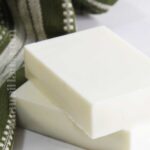






Share Your Thoughts